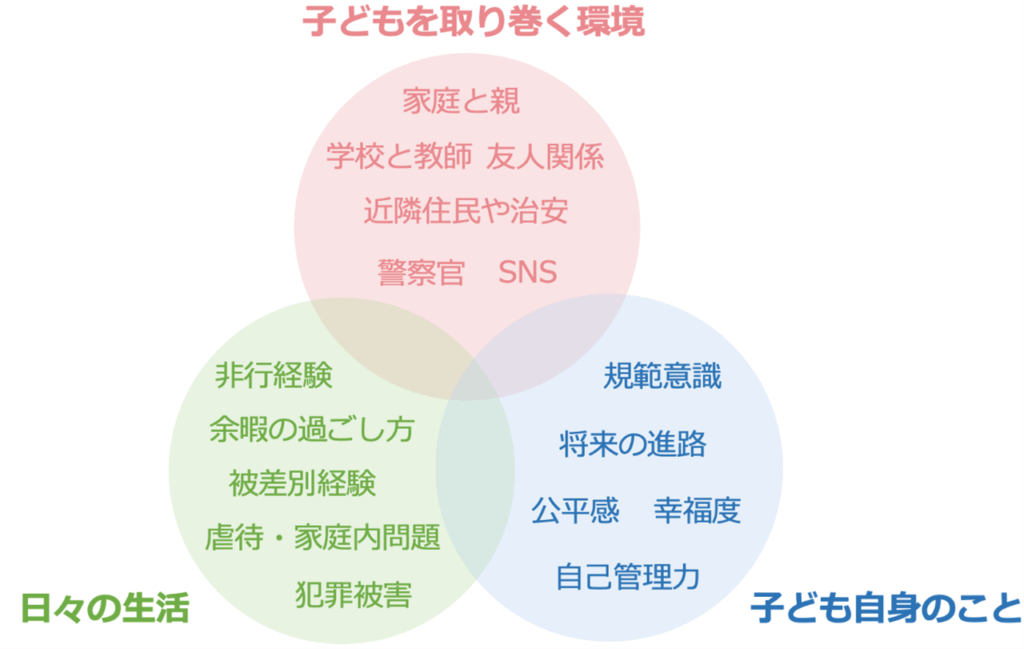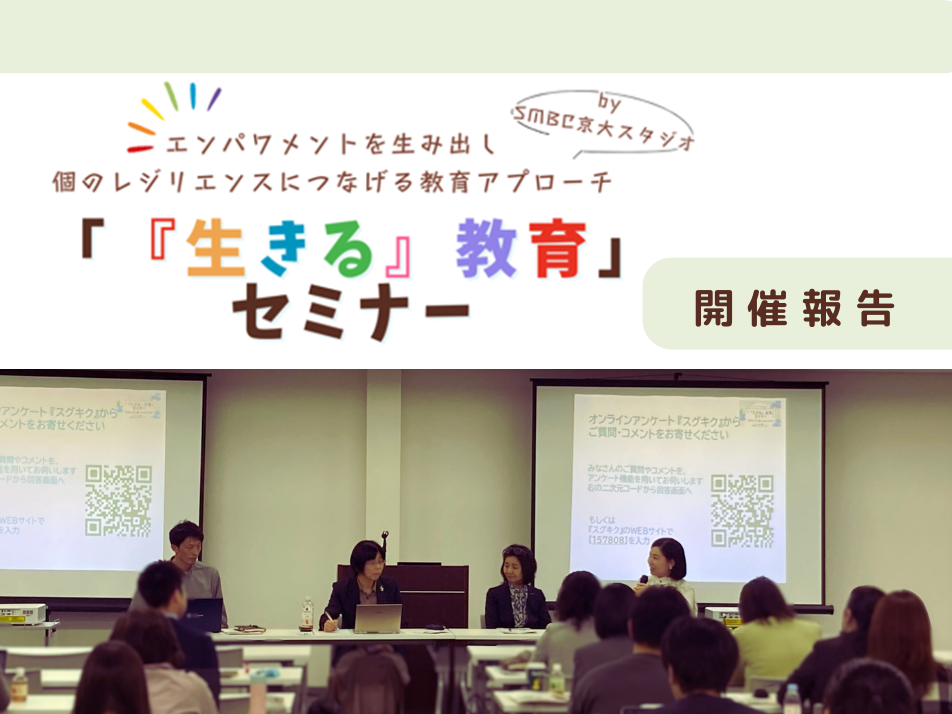"Research, development and dissemination of educational approaches that overcome the cycle of poverty, inequality and abuseAs part of our basic research, the "International Survey of Self-Reported Delinquency (ISRD)" project is conducting the International Survey of Self-Reported Delinquency (ISRD). In this column, we will introduce the importance of the ISRD and the results of the survey.
What is ISRD?
The International Self-Report Delinquency Study (ISRD) is an international large-scale social survey conducted in countries around the world with the aim of understanding the actual conditions of children's daily lives and attitudes, focusing on their delinquent behavior and experiences of adversity. The subjects are boys and girls in grades 7 to 9 (equivalent to grades 1 to 3 of junior high school in Japan) in each country, and approximately 1,000 to 2,000 children from each country respond to each survey.
The majority of juvenile delinquency is crime where the victim is hard to identify, such as shoplifting, graffiti, and drug use, or where there is no victim. In addition, even if a juvenile has experienced an adverse situation such as crime or abuse, the victim tends not to report it to the police or a counseling center. For these reasons, the actual situation of delinquency and victimization is often not reflected in official statistics such as police statistics or the results of crime victimization surveys (social surveys to grasp the victimization of crime, conducted by the Ministry of Justice in Japan, etc.) (these are called "hidden figures"). In light of this background, a method was developed to grasp the actual situation of delinquent behavior and victimization, called the "self-reporting method," in which participants are asked to report their own past experiences.
During the ISRD survey, children are explained that their answers will not identify them, that it will not affect their regular school grades or teacher evaluations, and that they can refuse to answer. By having children self-report their answers while taking sufficient consideration of their privacy and human rights, it is possible to obtain data that is close to the actual situation, and self-report methods have been widely used in crime and delinquency research to date.
The ISRD has been conducted four times so far: the third survey (ISRD3), in which Japan participated, was conducted in about 40 countries from 2012 to 2020, and the fourth survey (ISRD4) was conducted in about 50 countries from 2020 to 2025. The fifth survey (ISRD5), which is currently planned, is expected to include even more countries, and Japan's participation has also been confirmed.
ISRD Japan Survey
With Japan's participation in ISRD, the ISRD-JAPAN Committee was established by researchers specializing in education, sociology, law, psychology, etc. Several faculty members from the Kyoto University Graduate School of Education are also participating in this committee, and from 2024 onwards, they will be conducting research and studies as part of the project "Research, Development and Dissemination of Educational Approaches to Overcome the Cycle of Poverty, Disparity and Abuse." Prior to the actual survey, the committee translated the questionnaire, selected the cities where the survey would be conducted, and negotiated the implementation of the survey in a manner consistent with the protocol established by ISRD headquarters.
The ISRD3 Japan survey was conducted from December 2019 to February 2020 at multiple junior high schools in a city in the Kinki region with a population of over 200,000, while the ISRD4 Japan survey was conducted from December 2024 to January 2025 at five junior high schools in two cities in the Kinki region, both with a population of over 500,000, targeting all grades. Each survey took one class period in a junior high school classroom, and participants completed the survey using iPad devices provided and distributed by the research team. Excluding those who were absent on the day or whose students or parents did not agree to respond, the final number of valid respondents was 1,226 for ISRD3 (*2) and 1,820 for ISRD4 (*3).
(*1) The city is located in the Kinki region with a population of over 200,000, and we are not permitted to disclose the name of the city or the number of junior high schools where the survey was conducted.
(*2) For details on ISRD3, seeInternational Survey of Self-Reported Delinquency (ISRD) Research ReportFor details on the number of valid respondents and other survey details, see pages 5 and 6.
(*3) Details of ISRD4 have not been released as of May 2025.
As a clue to solving various problems surrounding children
The ISRD questionnaire includes not only problem behaviors such as delinquency, but also a variety of items related to children, such as the environment surrounding them, such as home, school, friendships, and social media, their desired future career paths, their sense of norms, feelings of happiness, sense of unfairness, and adverse experiences they have had, including abuse.

The ISRD survey allows us to get close to the "realities" of children - what kind of realities they live in, what they feel, and what problems they face. As an international survey, as mentioned above, it is also possible to shed light on the state of Japanese children from a global perspective, which is another feature of the ISRD that other social surveys do not have.
Understanding the current state of issues surrounding children, such as poverty, inequality, and abuse, is essential to breaking the cycle of these problems. We believe that it is extremely important to properly understand the "reality" of children's lives through the ISRD survey and disseminate this information to society.
| NEXT In the next issue, we will introduce the current state of children today, as revealed by data obtained through the ISRD Japan survey. |


